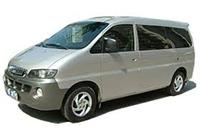Departs and Operates
Tour Type: Exclusive Private Tour
Vehicle: Car or Van
Operates: Daily
Departs: 8:00am or 1:30pm
Returns: 12:00am/5:30pm
Duration: Approx. 4 hours
Pick-up: Your midtown Hotel
Highlights:
• The 2008 Summer Olympics brought Beijing (and all of China) to the forefront of the world, and cemented the country as one of the world’s new superpowers. This tour will show you the monumental sights of new Beijing’s crowning achievement, such as the Bird’s Nest Stadium and the spectacular Water Cube
• The Summer Palace, with its landscaped gardens, temples and pavilions, was designed to achieve harmony with nature, and to soothe and please the eye. The park spreads across the low hills, including Longevity Hill, around Kunming Lake, and is divided into three main zones (administration, living, and relaxation). The wonderful buildings and courtyards wander beside the lake, along the waterways and climb the low slopes of the hillside
• We’ll conclude your tour with a visit to the Beijing Zoo, which houses a fantastic collection of Giant Pandas
Detailed itinerary:
1. You will be picked up from your hotel by your English-speaking guide, and by private van we will drive to the northern part of the city in order to visit the Olympic Green.
2. The Olympic Green was the center of the event that captivated the world for two weeks in August of 2008, and is where a majority of the Olympic events took place. The highlights that you will see today include the Bird’s Nest (officially known as the Beijing National stadium) and the Water Cube (the Beijing National Aquatics Center). The stadium gets its nickname from its outward design, which originated from the study of Chinese ceramics, implementing steel beams in order to hide supports for the retractable roof, thus giving the stadium the appearance of a "Bird's nest". The Bird’s Nest hosted the Opening and Closing Ceremonies, athletic events, and football final of the 2008 Summer Olympics, from 8 August to 24 August 2008. Since the Olympic’s end, the Bird’s Nest has been used to host events ranging from opera to a ski park.
3. The site of Michael Phelps’ Olympic triumph, the Water Cube design combines modern technologies with Chinese traditional values. In tradition, Chinese conceptualized a square Earth and a round Heaven, and this formed the design’s central theme. Moreover, the cube shape dominates ancient urban buildings. The National Aquatics Center's design is of traditional style to meet all its functional requirements. The National Aquatics Center looks like a huge blue box, from which it takes its nickname: the Water Cube. The Water Cube is blue in order to reflect sunlight. The National Aquatics Center shines in the sunlight like a pearl in water. From the inside of the National Aquatics Center, you may discover that the pneumatic cushions of all sizes are just like sea bubbles.
4. After our tour of the Olympic structures we’ll drive to the northwest edge of the city, where we will tour the Summer Palace. On our way to the Summer Palace we’ll pass through Zhongnancun,, which is Beijing’s Silicon Valley. Zhongnancun is a vital center for the city’s electrical and technological worlds. The electronic melting pot of Zhongnancun is famous for its masses of stores and markets specializing in computer hardware, software and digital equipment.
5. We will arrive at the Summer Palace. The Summer Palace has the largest royal park and being well preserved, the Summer Palace is ranked amongst the most noted and classical gardens of the world. In 1998, UNESCO listed it as one of the World Heritage Sites. Like most of the gardens of Beijing, it could not elude the rampages of the Anglo-French allied force of 1860 and was destroyed by fire. In 1888, Empress Dowager Cixi embezzled navy funds to reconstruct it for her own benefit, changing its name to Summer Palace (Yiheyuan). She spent most of her later years there, dealing with state affairs and entertaining. Highlights not to be missed are climbing Longevity Hill, viewing the Empress Dowager Cixi’s extravagant Marble Boat, and talking a walk down Suzhou jie, a canal meant to resemble the beautiful river city of Suzhou.
6. From the Summer Palace we’ll make the short drive to the Beijing Zoo. At the Beijing Zoo we’ll first head to the Panda House. Unlike other zoos in China, the Beijing Zoo has the distinct look of a classical Chinese garden. Initially an imperial manor during the Ming Dynasty, the grounds was converted into a zoo in 1908 with the original name being The Ten Thousand Animal Garden. The Beijing Zoo exhibits the wild and rare animals of China. Outside of traveling to Sichuan, this is the best place in China to view the Giant Panda.
7. After our visit to the Beijing Zoo we will drive directly back to your hotel and you will be dropped off.



